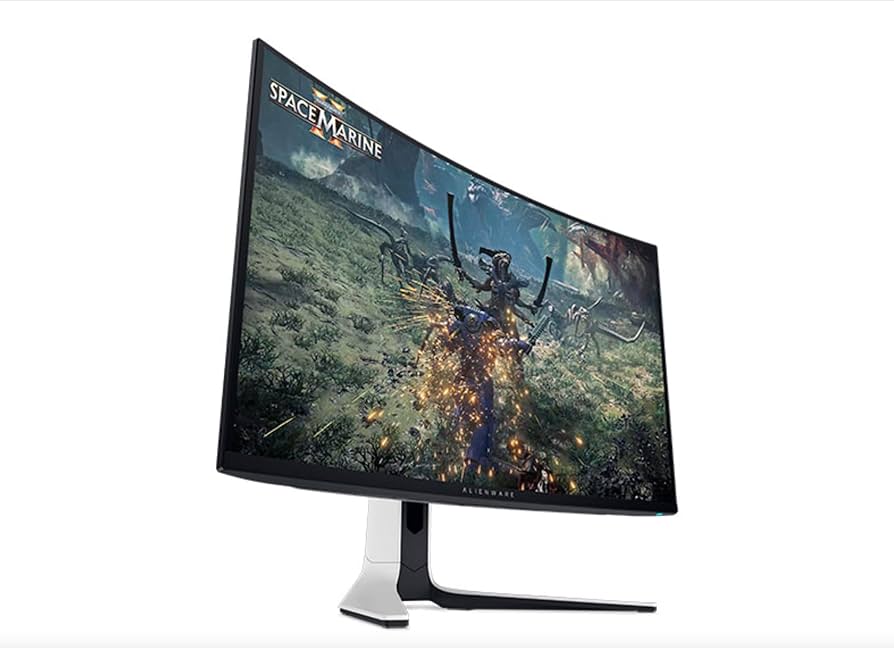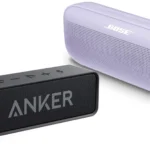Curved gaming monitors have surged in popularity over recent years, offering gamers a more immersive viewing experience by wrapping the display around their field of vision. In 2025, the technology powering these monitors has advanced significantly, delivering ultra-fast refresh rates, stunning resolutions, and innovative panel technologies like OLED and Mini LED.
Whether you’re a competitive esports player chasing every millisecond of response time or a casual gamer craving cinematic immersion, the latest curved gaming monitors cater to every need and budget.

Here’s an in-depth look at the top curved gaming monitors of 2025 — what makes them stand out, and which one might be the perfect fit for your gaming setup.
Why Choose a Curved Gaming Monitor?
Before diving into the best models, it’s worth understanding why curved monitors have become a favorite among gamers:
- Enhanced Immersion: The curvature wraps around your peripheral vision, creating a more natural and engaging field of view.
- Reduced Eye Strain: Curved screens help reduce distortion and glare at the edges, making long gaming sessions more comfortable.
- Better Depth Perception: The curve can improve depth cues, especially in fast-paced or open-world games.
- Wider Field of View: Especially on ultrawide curved monitors, you get more horizontal screen real estate, aiding multitasking and competitive advantages.
Top Curved Gaming Monitors in 2025: Detailed Breakdown
| Monitor Model | Screen Size | Resolution | Refresh Rate | Panel Type | Curvature | Price Range | Key Strengths |
|---|---|---|---|---|---|---|---|
| Dell Alienware AW3225QF | 32″ | 2560 x 1440 (QHD) | 240Hz | OLED | 1800R | $1,200-$1,400 | Ultra-fast response, OLED clarity, ideal for competitive gaming |
| Samsung Odyssey Neo G9 (57″) | 57″ | 7680 x 2160 (DUHD) | 240Hz | VA + Mini LED | 1000R | $2,500+ | Massive ultrawide, incredible brightness & contrast, immersive for simulation & RPGs |
| ASUS TUF Gaming VG34VQL1B | 34″ | 3440 x 1440 (WQHD) | 165Hz | VA | 1500R | $450-$600 | Great value, solid color accuracy, excellent for racing & shooters |
| LG UltraGear 45GR95QE | 45″ | 3440 x 1440 (WQHD) | 240Hz | OLED | 1800R | $1,500-$2,000 | OLED ultrawide, rich colors, perfect for immersive single-player games |
| Dell Alienware AW3423DWF | 34″ | 3440 x 1440 (WQHD) | 165Hz | QD-OLED | 1800R | ~$600 | Affordable QD-OLED, vibrant colors, great performance-to-price ratio |
1. Dell Alienware AW3225QF — The Competitive Gamer’s Dream
The Alienware AW3225QF is often hailed as the best curved gaming monitor overall. Featuring a 32-inch OLED panel, it offers near-instantaneous pixel response times and a blistering 240Hz refresh rate. OLED technology ensures perfect blacks and vibrant colors, while the 1800R curvature strikes a balance between immersion and comfort. This monitor is ideal for fast-paced esports titles like Valorant and CS, where every millisecond counts.
2. Samsung Odyssey Neo G9 (57″) — The Immersive Giant

If you want to go big or go home, the Samsung Odyssey Neo G9’s 57-inch ultrawide curved display redefines immersion. With a stunning 7680 x 2160 resolution (dual QHD) and Mini LED backlighting, it delivers exceptional brightness and contrast. Its aggressive 1000R curve perfectly matches the human eye’s curvature, making it a favorite for flight simulators, racing games, and expansive RPGs. However, it commands a premium price and requires a powerful PC to drive its massive pixel count.
3. ASUS TUF Gaming VG34VQL1B — Best Value for Enthusiasts
For gamers seeking a more budget-friendly option without compromising quality, the ASUS TUF 34″ curved monitor offers excellent specs. With a 165Hz refresh rate and 1500R curvature, it’s well-suited for immersive racing and shooter games. Its VA panel provides deep blacks and good contrast, making it a versatile choice for both gaming and content consumption.
4. LG UltraGear 45GR95QE — The OLED Ultrawide Marvel
LG’s 45-inch UltraGear OLED monitor combines ultrawide format with OLED technology, delivering stunning color accuracy and contrast. With a 240Hz refresh rate and 1800R curve, it’s perfect for gamers who want cinematic immersion alongside competitive performance. Its 21:9 aspect ratio gives you extra horizontal space for multitasking or immersive gameplay.
5. Dell Alienware AW3423DWF — Affordable QD-OLED Powerhouse
Dell’s AW3423DWF brings QD-OLED technology to the masses at around $600, a remarkable price point for such advanced tech. It offers vibrant colors, deep blacks, and a 165Hz refresh rate. This monitor is ideal for gamers who want OLED-level image quality without breaking the bank.
What to Consider When Buying a Curved Gaming Monitor in 2025
- Refresh Rate & Response Time: Fast refresh rates (144Hz and above) and low response times (<5ms) are crucial for smooth gameplay and competitive advantage.
- Resolution & Size: Larger screens with higher resolution offer more immersive visuals but require more powerful GPUs.
- Panel Type: OLED and QD-OLED panels provide superior contrast and color but can be pricier; VA panels offer good contrast at a lower cost.
- Curvature Radius: Lower numbers (e.g., 1000R) mean a more aggressive curve, enhancing immersion but not ideal for all desk setups.
- Connectivity & Features: Look for HDMI 2.1, DisplayPort 1.4, G-Sync/FreeSync support, and customizable RGB lighting for a complete gaming experience.
Final Thoughts
The curved gaming monitor market in 2025 is more vibrant and diverse than ever. Whether you prioritize ultra-fast refresh rates for esports, massive ultrawide displays for immersive RPGs, or OLED technology for stunning visuals, there’s a curved monitor tailored to your needs.
Investing in a curved monitor not only enhances gameplay but also future-proofs your setup for the next generation of games and consoles. Keep an eye on emerging technologies like QD-OLED and Mini LED, which are rapidly becoming standard in high-end gaming displays.
Gaming on a curved monitor can transform your experience, offering a more immersive way to play your favorite titles. In 2025, several outstanding curved gaming monitors have emerged, with the Dell Alienware AW3225QF taking the top spot according to recent reviews. This premium display features Samsung’s 3rd Gen QD-OLED technology, delivering exceptional visuals with 4K resolution that makes it the standout choice for serious gamers looking for both performance and picture quality.
For those seeking alternatives, the Samsung Odyssey Neo G8 offers excellent 4K gaming capabilities with its curved design enhancing gameplay immersion. Meanwhile, HP’s E45c G5 stands out as a productivity-focused curved monitor that still delivers solid gaming performance. The market now includes options at various price points and sizes, making curved gaming monitors more accessible than ever.
Key Takeaways
- The Dell Alienware AW3225QF currently leads the curved gaming monitor market with its QD-OLED technology and 4K resolution.
- Curved monitors enhance immersion by matching the natural curvature of human vision during intense gaming sessions.
- Models range from ultrawide productivity displays to specialized gaming monitors with high refresh rates up to 180Hz.
Technology and Specifications
Modern curved gaming monitors combine cutting-edge display technologies with performance-focused features. Recent models from manufacturers like Dell Alienware and Samsung Odyssey showcase significant advancements in panel technology and refresh rates.
Screen Technology
QD-OLED panels represent the latest innovation in curved gaming monitors, with Dell’s Alienware AW3225QF utilizing Samsung’s 3rd Gen QD-OLED technology. This advanced panel type offers perfect black levels and exceptional color accuracy that traditional displays can’t match.
IPS panels remain popular for their excellent viewing angles and color reproduction, though they typically have lower contrast ratios than VA alternatives. VA panels deliver superior contrast but may exhibit slower response times.
Panel curvature varies across models, with more aggressive curves (1000R) providing greater immersion for gaming. The ultrawide 21:9 aspect ratio has become standard for premium curved gaming monitors, offering expanded peripheral vision in games.
HDR performance continues to improve, with high-end models supporting HDR10 and even HDR400 or HDR600 certifications for more realistic lighting effects and better visibility in dark game scenes.
Performance Metrics
Refresh rates have climbed significantly, with 240Hz becoming the new standard for competitive gaming displays. The Alienware 32 AW3225QF and Samsung Odyssey models feature this high refresh rate, delivering exceptionally smooth motion.
Response time remains crucial for eliminating ghosting and motion blur. Premium curved gaming monitors typically offer 1ms gray-to-gray response times for clear visuals during fast-paced gameplay.
Resolution options span from 1080p in budget models to ultrawide 1440p (3440×1440) and full 4K (3840×2160) in premium offerings. Higher resolutions provide sharper images but require more powerful graphics cards.
Brightness levels generally range from 300-600 nits, with HDR models pushing even higher for peak brightness. Contrast ratios vary by panel type, with VA and OLED displays delivering the most impressive dark scene performance.
Compatibility and Connectivity
HDMI 2.1 has become essential for modern gaming monitors, supporting 4K at 120Hz for both PC and console gaming. This makes new curved gaming monitors fully compatible with PS5 and Xbox Series X.
DisplayPort connections remain the preferred option for PC gamers, with DisplayPort 1.4 supporting high refresh rates at maximum resolutions. Many premium models include multiple DisplayPort inputs for multi-device setups.
Variable refresh rate technologies prevent screen tearing during gameplay. Nvidia G-Sync and AMD FreeSync compatibility is now standard across most curved gaming monitors, with many displays supporting both technologies.
USB-C connectivity with power delivery is increasingly common, allowing for single-cable connections to laptops. Additional USB ports enable peripherals to connect directly to the monitor rather than the PC.
Top Models and Brands
Several manufacturers have emerged as leaders in the curved gaming monitor market, offering impressive technologies like QD-OLED panels and ultrawide displays that enhance immersion. These top models balance screen size, viewing angles, and gaming performance features.
Leading Curved Gaming Monitors
The Dell Alienware AW3225QF stands out as the premier curved gaming monitor in 2025. This 32-inch display features Samsung’s 3rd Gen QD-OLED technology, delivering exceptional visual quality and gaming performance.
Samsung’s Odyssey lineup continues to impress gamers. The Odyssey OLED G9 provides an immersive ultrawide experience, while the Odyssey Neo G8 offers excellent 4K gaming capabilities with its striking curve.
LG’s UltraGear 45GR95QE-B has gained popularity for its massive 45-inch OLED panel paired with an aggressive 800R curve that wraps around the player’s field of view.
Other notable options include the Corsair Xeneon 34WQHD240-C QD-OLED and HP E45c G5 DQHD curved monitors, both delivering solid gaming performance.
Feature Analysis and Recommendations
Panel Technology: QD-OLED displays like those in the Alienware models offer superior contrast and viewing angles compared to curved VA panels, though at a higher price point.
Screen Size & Aspect Ratio: 34-inch ultrawide monitors provide an excellent balance between immersion and desk space. The 21:9 aspect ratio is ideal for gaming while still supporting productivity tasks.
Gaming Features to Consider:
- Refresh rates (look for 144Hz minimum)
- Response times (1ms is ideal)
- AMD FreeSync Premium Pro or NVIDIA G-Sync
- HDR support (DisplayHDR 400 or better)
Curved monitors with 1800R to 1000R curvatures provide the most comfortable viewing experience without distortion. The more aggressive 800R curves create maximum immersion but may require adjustment time for some users.
Frequently Asked Questions
Gamers have many questions about curved monitors as they shop for the right display. These FAQs cover everything from resolution options to size benefits and curvature impacts.
What are the top-rated curved gaming monitors available in 4K resolution?
The Alienware 32 AW3225QF stands out as one of the best 4K curved gaming monitors in 2025. It features Samsung’s 3rd Gen QD-OLED technology, delivering exceptional visual quality with vibrant colors and deep blacks.
Samsung’s Odyssey line continues to offer excellent 4K curved options with high refresh rates and minimal response times. These monitors typically include HDMI 2.1 connectivity for next-gen console compatibility.
LG’s UltraGear curved 4K monitors provide another premium option, combining HDR support with gaming-focused features like G-Sync and FreeSync Premium Pro.
Which curved gaming monitors provide the best value on a budget?
The Acer Nitro ED3 ultrawide represents exceptional value, especially when on sale at retailers like Costco for around $269. This ultrawide UWQHD monitor offers immersive gameplay without breaking the bank.
AOC’s curved gaming monitors typically provide excellent price-to-performance ratios with 144Hz refresh rates and VA panels at budget-friendly prices. Models in the 27-30 inch range offer the best balance of features and cost.
MSI’s MAG series includes several affordable curved options with gaming-oriented features like adaptive sync technology and high contrast ratios.
How does monitor curvature affect gaming performance and eye comfort?
The 1000R curvature is considered ideal as it matches human viewing angles and depth perception. This creates a more immersive experience while potentially reducing eye strain during long gaming sessions.
Less aggressive 1500R curves offer a good middle ground for users who want some immersion benefits without the full wrap-around effect. This curvature works well for both gaming and productivity tasks.
Curved monitors can reduce eye movement across the screen compared to flat monitors of the same size. This design helps maintain consistent viewing distances across the entire display.
What are the advantages of using a 27-inch curved gaming monitor?
A 27-inch curved monitor provides an excellent balance between screen real estate and desk space requirements. This size fits well in most gaming setups without overwhelming smaller desks.
These monitors typically cost less than their larger counterparts while still offering the immersive benefits of curvature. Many 27-inch models feature high refresh rates of 144Hz or more.
The curve on a 27-inch monitor is subtle enough to enhance gaming without causing distortion in productivity applications. This makes it versatile for users who both game and work on the same monitor.
What are the features to look for in a high-quality 32-inch curved gaming monitor?
Look for a minimum refresh rate of 144Hz and response times under 4ms to ensure smooth gameplay at this larger size. Higher-end models now offer 240Hz or even 360Hz options.
Panel technology matters significantly – VA panels provide better contrast while IPS panels offer superior color accuracy and viewing angles. QD-OLED panels like in the Alienware 32 combine the best of both.
HDR certification (preferably HDR600 or higher) enhances visual quality in supported games. Additional features like USB hubs, height-adjustable stands, and KVM switches add significant value.
Are there any benefits to using a 49-inch curved gaming monitor for immersive gameplay?
The ultra-wide 32:9 aspect ratio of 49-inch curved monitors provides a panoramic view that can replace multi-monitor setups. This eliminates bezels in the center of your vision for truly immersive gameplay.
Many racing, flight simulator, and open-world game enthusiasts prefer these monitors as they expand peripheral vision. The natural curve helps maintain focus across the entire display.
These super ultrawide monitors often include picture-by-picture modes that effectively create two side-by-side displays. This allows for gaming on one half while watching content or chatting on the other.







